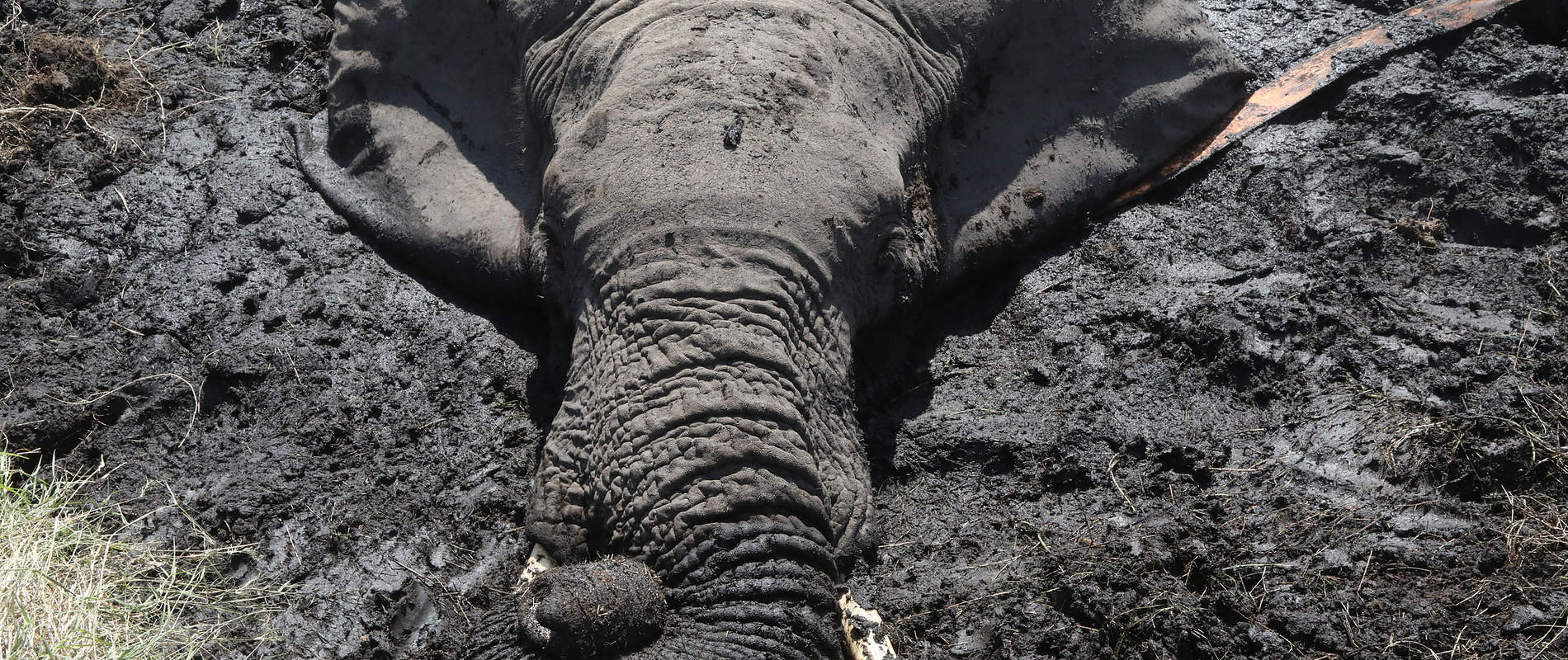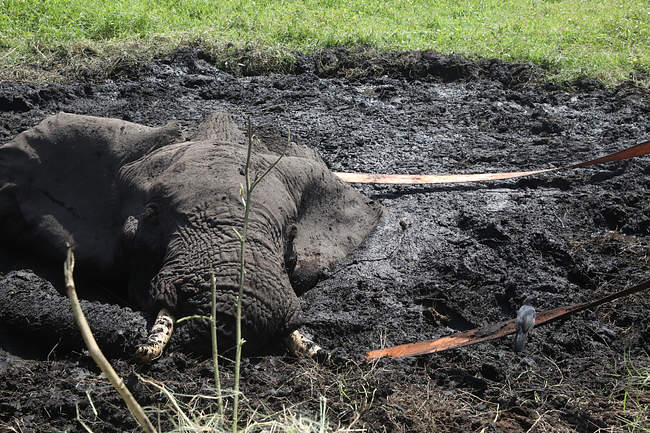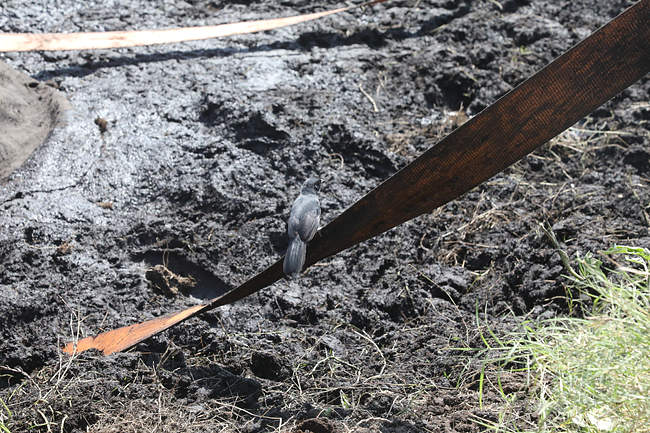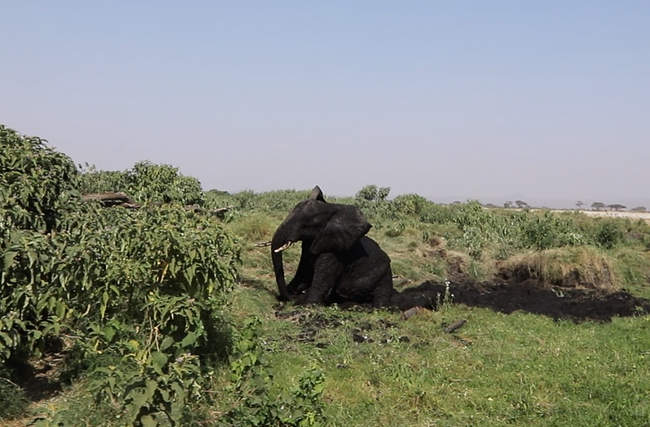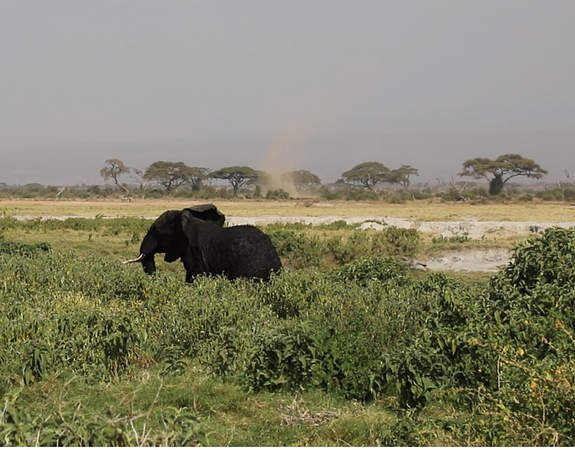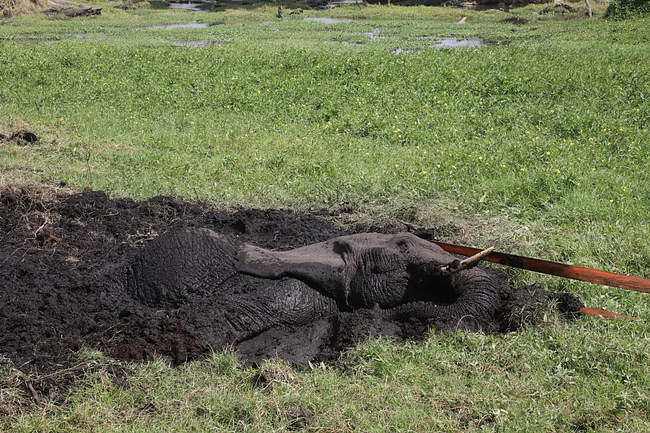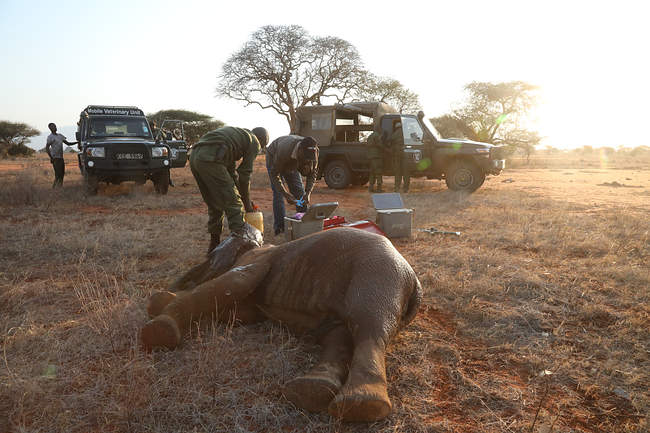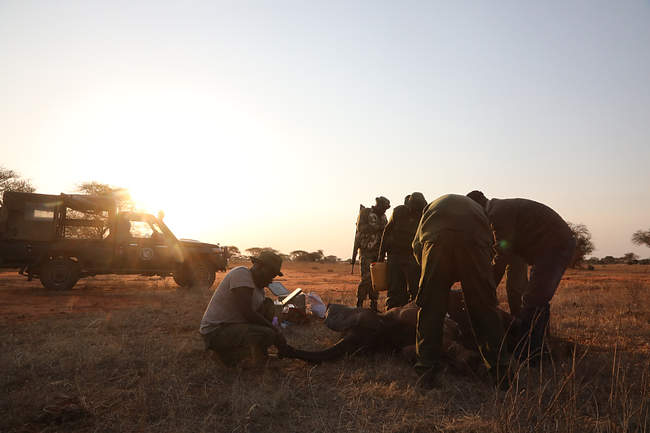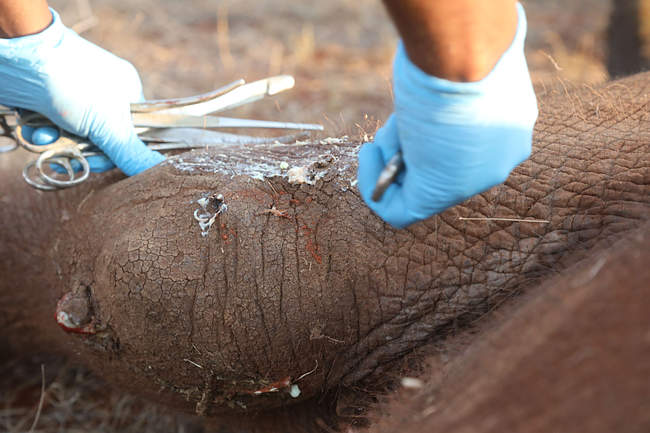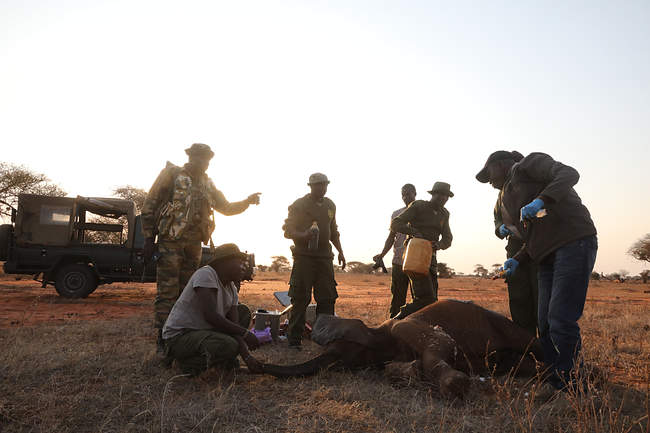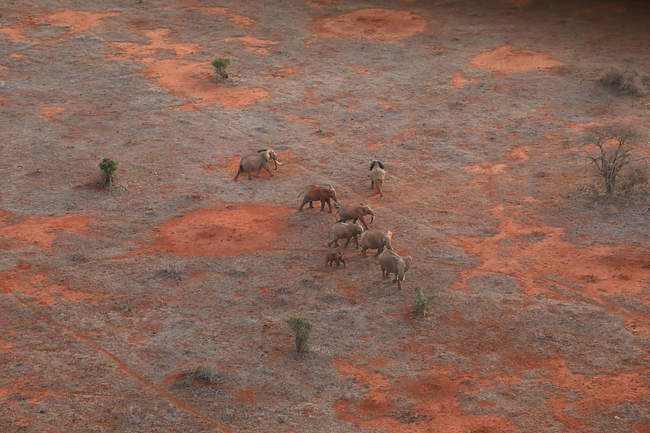Three types of aircraft, road vehicles and many hands coming together to help an exhausted elephant trapped in mud and an elephant calf with an injured leg.
Wednesday 24th July was one of those days in the field where, thankfully, everything just worked out; but not without some drama. For the Sheldrick Trust’s Aerial Unit, the day started with the continuation of a search for an elephant calf that had been sighted four days previously by tourists in Tsavo East. The calf was reported to be limping badly on a swollen leg and for three days our teams had been searching tirelessly to find the calf, restricted only by extremely strong winds affecting much of the country, which repeatedly cut short each day’s search.
Finally, the winds let up on the 24th and one of the Sheldrick Wildlife Trust’s Super Cubs was accompanied by a gyrocopter from Wildlife Works, who generously offered their assistance. Having two aircraft in the air enabled us to cover twice the ground and after more than an hour of searching, Wildlife Works’ pilot, Keith Hellyer, excitedly radioed in with a positive sighting. After confirming that it was the same calf, the SWT aircraft returned to base and began putting together a plan to collect KWS Vet Dr. Kariuki, assigned to the SWT/KWS Amboseli Veterinary Unit, as Dr. Poghon of the Tsavo Mobile Vet Unit is currently away on leave. Meanwhile, a Sheldrick Trust ground team moved into position nearby the elephant calf and its family to monitor the calf’s condition and keep track of their location.

There was, however, set to be a twist in the day’s events, as upon arriving in Amboseli to collect the Vet, Dr. Kariuki received a phone call about a bull elephant that had been spotted near a spring in Amboseli buried in thick mud and unable to escape. Being a potentially life threatening situation, this report demanded immediate attention and, mindful that our ground teams were monitoring the injured calf, we put his treatment on temporary hold and rushed to the scene of the trapped bull. The elephant was found totally exhausted, having accidentally slipped into a thick, muddy swamp, fed by the adjacent spring. It had obviously struggled all night, sinking deeper and deeper into the mud as it tried desperately to get out.
It was immediately apparent, from our experience in freeing elephants trapped in similar predicaments, that the operation to free the elephant would take several hours and we feared that the elephant calf, that we’d set out to help in the morning, might not be attended to the same day.
Nevertheless, Kenya Wildlife Service rangers set about securing heavy-duty straps around the shoulders of the elephant, but unfortunately, the first attempts to tow him out of the mud by vehicle failed. The bank that the elephant was closest to was extremely steep and the ground that the towing vehicle had to travel over was extremely rough, covered in deep holes which were hidden by tall clumps of grass. The only option seemed to be to tow the elephant in the opposite direction, potentially dragging it deeper into the swamp. At this point, two Land Cruisers were working in concert to tow the elephant and a KWS tractor was also now en route to help. One attempt after another failed, until eventually the elephant had been moved into a position that could be accessed from a better angle for the vehicles. At this moment, the tractor appeared and the team went about clearing a new path next to the swamp, carrying large logs out of the way to make room for the elephant to be pulled out of the mud and re-securing the straps around the elephant’s shoulders.
The task of getting straps around the elephant in itself carried immense risk to the team – the elephant often reaching out with its long trunk to try and snag a ranger’s boot, or tugging at the straps so swiftly and forcefully than fully grown men were thrown to the ground. Despite this challenge and the risks to their own safety, the determined team finally succeeded in attaching the elephant once more to the growing train of vehicles and after a gargantuan effort, the elephant emerged from the mud and was deposited on the bank. As the team looked on anxiously, he slowly managed to get to his feet and it was a massive relief for everyone involved when he then calmly walked away and onto firm, dry ground.
Attention quickly returned to the limping elephant calf more than 100 miles away. The SWT’s ground team was still on site and there was just enough light left in the day to attempt a treatment. In order to give us the best chance of darting and treating in time, the Trust’s helicopter flew to Voi to meet Dr. Kariuki, who was already on his way there in one of the SWT fixed-wing aircraft. Fortunately, the darting itself went off without a hitch and, once the anesthetic took effect, the Vet moved in to swiftly examine and treat the calf, which was then reunited with its family as the sun fell towards the horizon.
Although the calf has been given a guarded prognosis – the vet’s examination revealing that a possible fracture had led to a terrible infection in the joint – we were able to give this young elephant the best possible chance at survival. Our teams will continue to monitor its progress over the coming weeks and if necessary the vet will return to conduct a follow-up treatment.
Our thanks to the Kenya Wildlife Service and Wildlife Works for their assistance in these two cases and, as ever, to our own teams, for the unwavering efforts of all involved ensured that on this single day we could save one life and offer hope for another.
